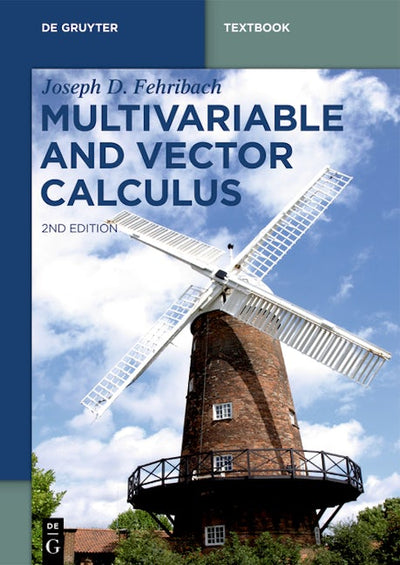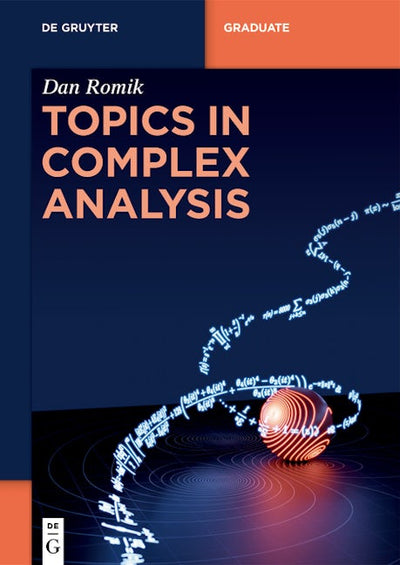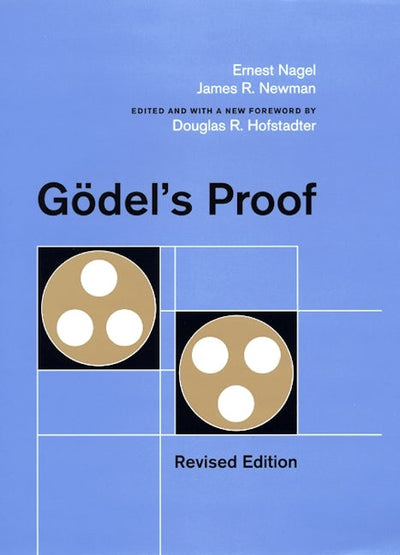You may also like
Multivariable and Vector Calculus
Regular price $70.99 Save $-70.99This book covers multivariable and vector calculus. It can be used as a textbook for a one-semester course or self-study. It includes worked-through exercises, with answers provided for many of the basic computational ones and hints for the more complex ones.. This second edition features new exercises, new sections on twist and binormal vectors for curves in space, linear approximations, and the Laplace and Poisson equations.

The Mathematics of Machine Learning
Regular price $70.99 Save $-70.99This book is an introduction to machine learning, with a strong focus on the mathematics behind the standard algorithms and techniques in the field, aimed at senior undergraduates and early graduate students of Mathematics.
There is a focus on well-known supervised machine learning algorithms, detailing the existing theory to provide some theoretical guarantees, featuring intuitive proofs and exposition of the material in a concise and precise manner. A broad set of topics is covered, giving an overview of the field. A summary of the topics covered is: statistical learning theory, approximation theory, linear models, kernel methods, Gaussian processes, deep neural networks, ensemble methods and unsupervised learning techniques, such as clustering and dimensionality reduction.
This book is suited for students who are interested in entering the field, by preparing them to master the standard tools in Machine Learning. The reader will be equipped to understand the main theoretical questions of the current research and to engage with the field.

Continuous-Parameter Time Series
Regular price $147.99 Save $-147.99This book provides a self-contained account of continuous-parameter time series, starting with second-order models. Integration with respect to orthogonal increment processes, spectral theory and linear prediction are treated in detail. Lévy-driven models are incorporated, extending coverage to allow for infinite variance, a variety of marginal distributions and sample paths having jumps. The necessary theory of Lévy processes and integration of deterministic functions with respect to these processes is developed at length. Special emphasis is given to the analysis of continuous-time ARMA processes.

Topics in Complex Analysis
Regular price $87.99 Save $-87.99This graduate-level mathematics textbook provides an in-depth and readable exposition of selected topics in complex analysis. The material spans both the standard theory at a level suitable for a first-graduate class on the subject and several advanced topics delving deeper into the subject and applying the theory in different directions. The focus is on beautiful applications of complex analysis to geometry and number theory. The text is accompanied by beautiful figures illustrating many of the concepts and proofs.
Among the topics covered are asymptotic analysis; conformal mapping and the Riemann mapping theory; the Euler gamma function, the Riemann zeta function, and a proof of the prime number theorem; elliptic functions, and modular forms. The final chapter gives the first detailed account in textbook format of the recent solution to the sphere packing problem in dimension 8, published by Maryna Viazovska in 2016 — a groundbreaking proof for which Viazovska was awarded the Fields Medal in 2022.
The book is suitable for self-study by graduate students or advanced undergraduates with an interest in complex analysis and its applications, or for use as a textbook for graduate mathematics classes, with enough material for 2-3 semester-long classes. Researchers in complex analysis, analytic number theory, modular forms, and the theory of sphere packing, will also find much to enjoy in the text, including new material not found in standard textbooks.

Gödel's Proof
Regular price $18.00 Save $-18.00An accessible explanation of Kurt Gödel's groundbreaking work in mathematical logic
In 1931 Kurt Gödel published his fundamental paper, "On Formally Undecidable Propositions of Principia Mathematica and Related Systems." This revolutionary paper challenged certain basic assumptions underlying much research in mathematics and logic. Gödel received public recognition of his work in 1951 when he was awarded the first Albert Einstein Award for achievement in the natural sciences—perhaps the highest award of its kind in the United States. The award committee described his work in mathematical logic as "one of the greatest contributions to the sciences in recent times."
However, few mathematicians of the time were equipped to understand the young scholar's complex proof. Ernest Nagel and James Newman provide a readable and accessible explanation to both scholars and non-specialists of the main ideas and broad implications of Gödel's discovery. It offers every educated person with a taste for logic and philosophy the chance to understand a previously difficult and inaccessible subject.
New York University Press is proud to publish this special edition of one of its bestselling books. With a new introduction by Douglas R. Hofstadter, this book will appeal students, scholars, and professionals in the fields of mathematics, computer science, logic and philosophy, and science.

Affine Space Fibrations
Regular price $151.99 Save $-151.99Affine algebraic geometry has progressed remarkably in the last half a century, and its central topics are affine spaces and affine space fibrations. This authoritative book is aimed at graduate students and researchers alike, and studies the geometry and topology of morphisms of algebraic varieties whose general fibers are isomorphic to the affine space while describing structures of algebraic varieties with such affine space fibrations.







